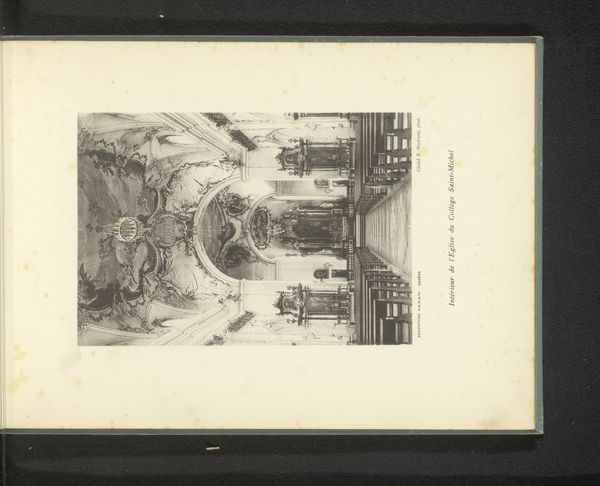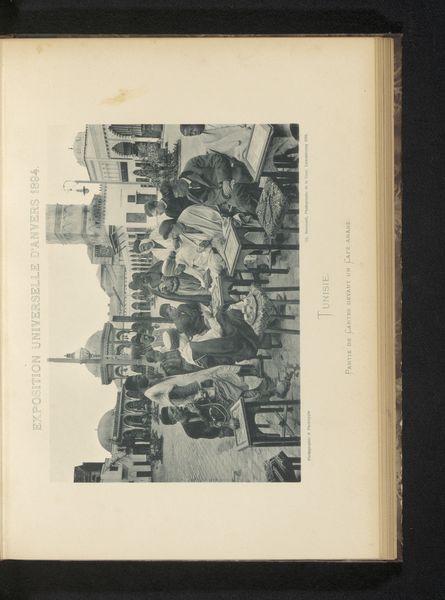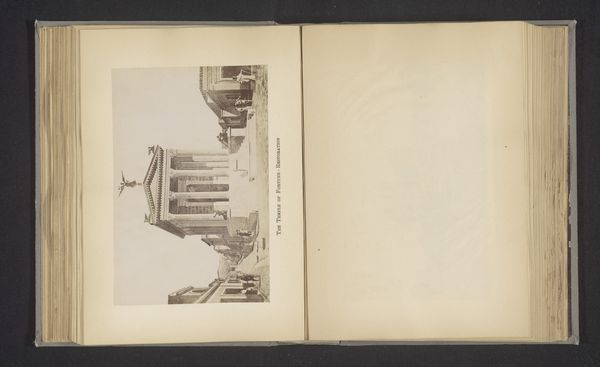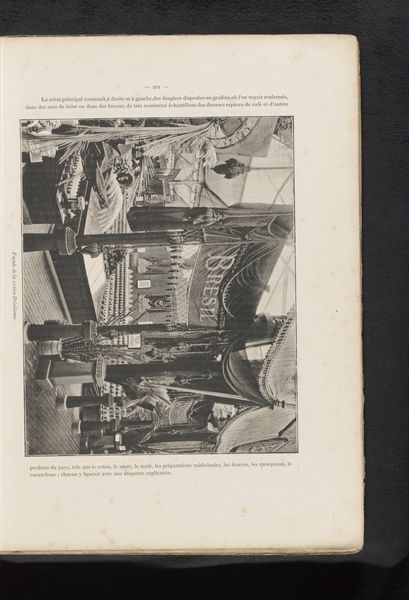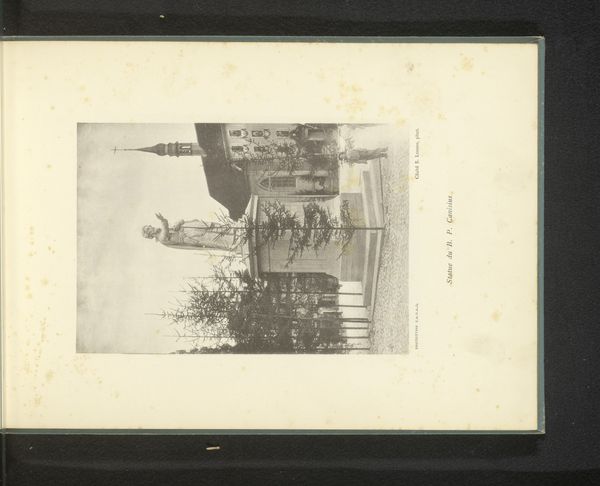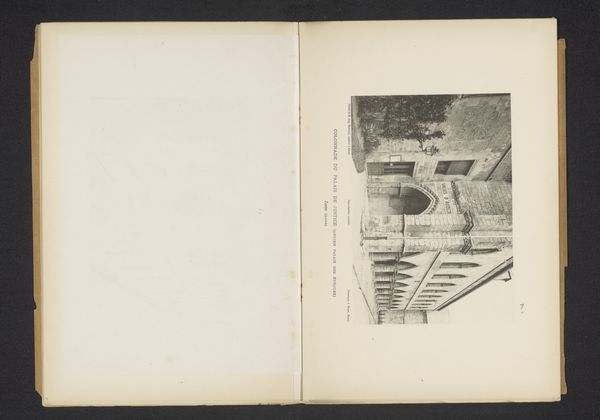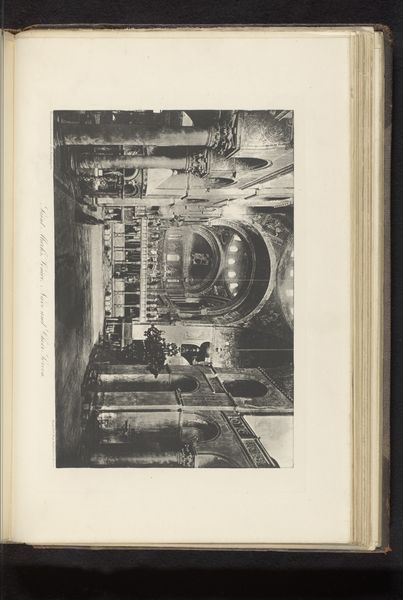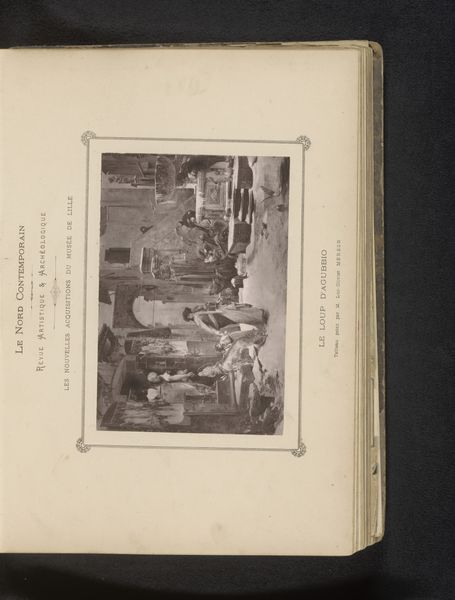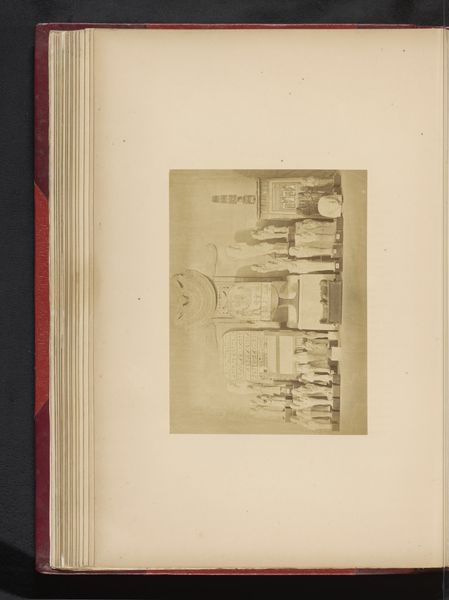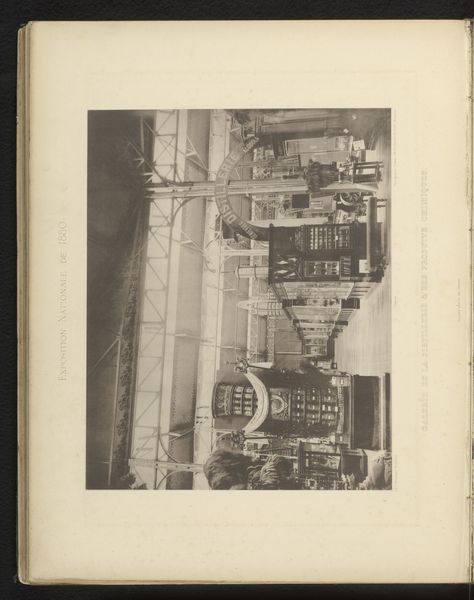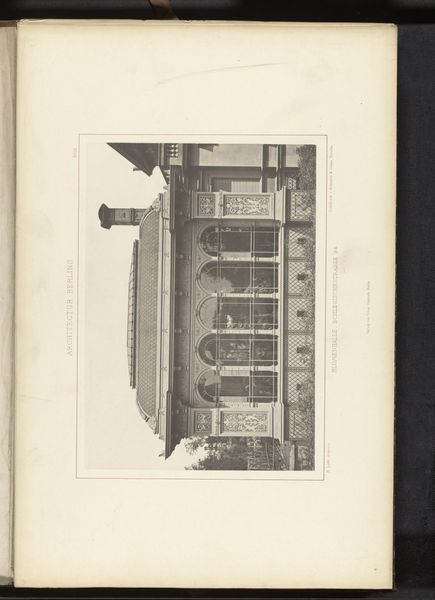
Binnenplaats van het Oude Kasteel in Stuttgart, Duitsland before 1875
0:00
0:00
georgmariaeckert
Rijksmuseum
Dimensions: height 247 mm, width 192 mm
Copyright: Rijks Museum: Open Domain
Curator: Let’s turn our attention to this print titled "Binnenplaats van het Oude Kasteel in Stuttgart, Duitsland," attributed to Georg Maria Eckert and dating from before 1875. Editor: My first impression is one of slightly unsettling grandeur, maybe even oppressive. The columns are enormous, dwarfing the figures and hinting at some sort of looming, powerful history. Curator: It is indeed an etching, likely printed using ink on paper, giving it this slightly muted, almost melancholic tone that amplifies that feeling you picked up on. This method, popular at the time, allowed for relatively mass production, making these scenes of architectural marvels accessible to a wider audience, though of course the labor was intensive. Editor: Those columns! They practically scream classical power. They're not just supporting the structure; they're symbolic pillars of authority. I see echoes of Roman ideals here – law, order, empire reflected in the rigid lines and the formal poses of the figures. Curator: The realism with which Eckert has portrayed this inner courtyard speaks volumes about the aspirations of the burgeoning middle class during that era. Capturing scenes of nobility and then turning those views into printed commodities gave a taste of luxury and importance for private domestic life. Editor: I'm drawn to the figures standing casually, yet with such seriousness, in the foreground. They’re placed at an eye-level perspective; what is their relationship to this courtyard? Are they guardians, merchants, perhaps petitioners? Each small human form contains an entire drama. Curator: Their garments, their postures are crucial clues to interpreting 19th-century German society, don't you think? Who was represented in such cityscapes, how, why... All deeply connected to the economic power dynamics of that time. The making of the image itself mimics processes of production of that time. Editor: Indeed! By viewing those symbols of stature that people relate with now we may realize an entire heritage connected with a collective identity; even in places and buildings. This vision feels frozen, it makes one consider the cultural endurance the location represents for us all. Curator: Thinking about how the industrial revolution made even scenes of opulence manufacturable...that gives it, for me, even richer value. Editor: What you highlighted really reframed it for me: I'm starting to consider just what this artwork could say about the psychology of places we now occupy, if we pause to ask questions about how cultural identity comes into existence through visual symbolism.
Comments
No comments
Be the first to comment and join the conversation on the ultimate creative platform.
